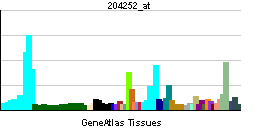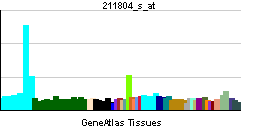Cyclin-dependent kinase 2
Cyclin-dependent kinase 2 is part of the cyclin-dependent kinase family.
The protein encoded by this gene is a member of the Ser/Thr protein kinase family. This protein kinase is highly similar to the gene products of S. cerevisiae cdc28, and S. pombe cdc2. It is a catalytic subunit of the cyclin-dependent protein kinase complex, whose activity is restricted to the G1-S phase of the cell cycle, and is essential for the G1/S phase transition. This protein associates with and regulated by the regulatory subunits of the complex including cyclin E or A. Cyclin E binds to G1 phase Cdk2, which is required for the transition from G1 to S phase while binding with Cyclin A is required to progress through the S phase. Its activity is also regulated by phosphorylation. Known CDK inhibitors are p21Cip1 (CDKN1A) and p27Kip1 (CDKN1B). Two alternatively spliced variants and multiple transcription initiation sites of this gene have been reported.[1]
The role of this protein in G1-S transition has been recently questioned as cells lacking Cdk2 are reported to have no problem during this transition. [2]
References
Further reading
- Kaldis P, Aleem E (2007). "Cell cycle sibling rivalry: Cdc2 vs. Cdk2". Cell Cycle. 4 (11): 1491–4. PMID 16258277.
- Moore NL, Narayanan R, Weigel NL (2007). "Cyclin dependent kinase 2 and the regulation of human progesterone receptor activity". Steroids. 72 (2): 202–9. doi:10.1016/j.steroids.2006.11.025. PMID 17207508.
External links
- Cyclin-Dependent+Kinase+2 at the US National Library of Medicine Medical Subject Headings (MeSH)
| This transferase article is a stub. You can help Wikipedia by expanding it. |


